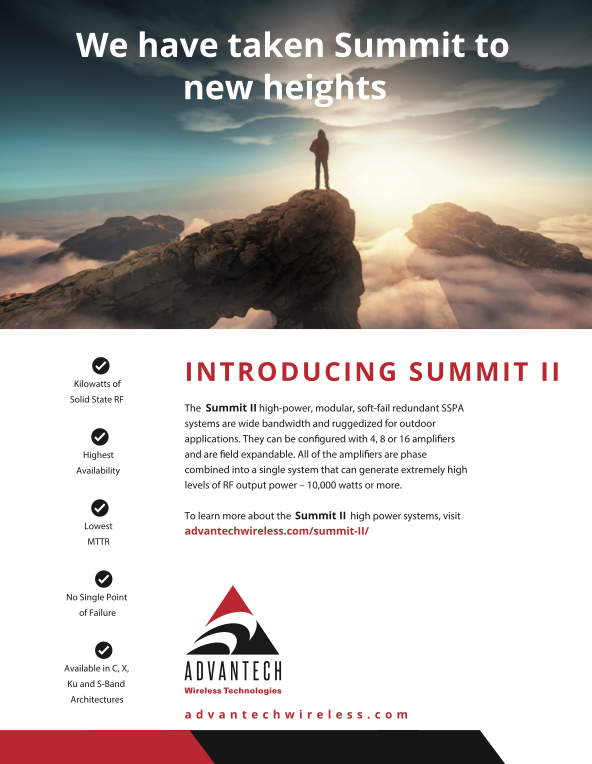Luis Gomes started working on smallsats in the mid-1990s while studying for his degree in Lisbon and joined Surrey Satellite Technology Limited (SSTL) in 1997 as a Mission Analyst, later taking on the project management of several EO missions. He ran the Earth Observation (EO) division of SSTL for several years, leading developments in optics, SAR and video from space, before taking the role of Commercial Director and later CTO of the company. Luis joined AAC Clyde Space as CEO in 2019 to pursue the next revolution in the space industry. Since Joining the company Luis has focused his efforts in growing the company and extending the Space Data as a Service business line, with a view to make services and data from space more accessible to all.
Good day, Mr. Gomes. Would you please tell our readers about your background and how your training and experience placed you in good stead to administer this company thought these exciting times.
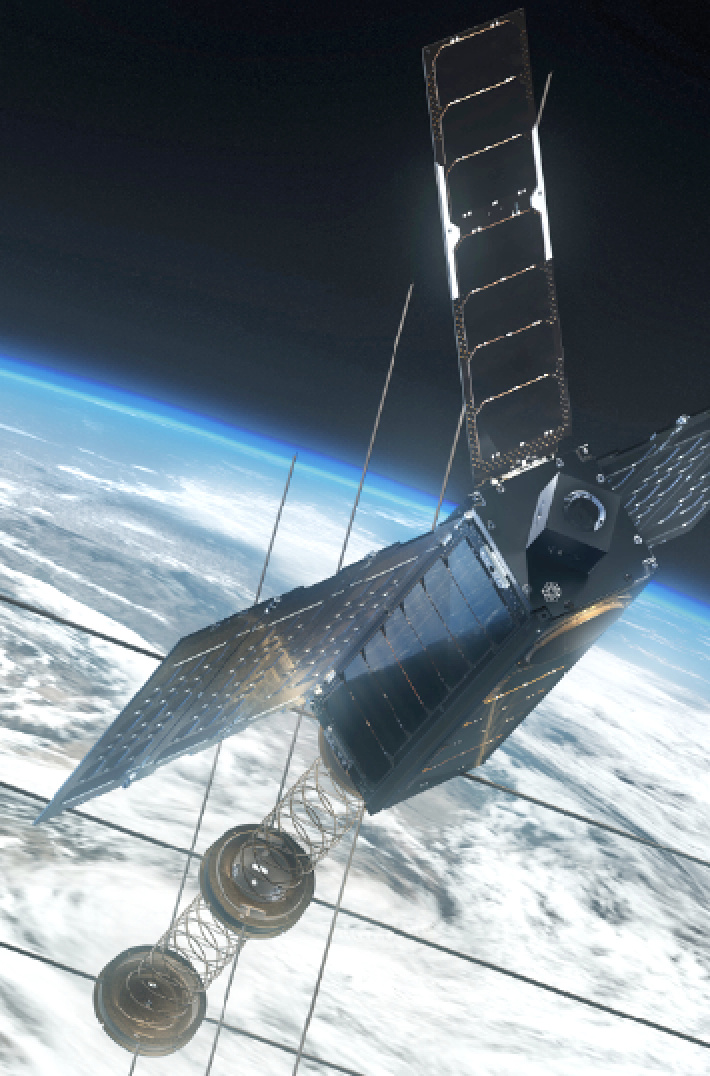

Luis Gomes
My background is quite a typical one for many in our industry. I started working in small satellites when I was an undergraduate, and after my degree, I went on to work first in a government research facility and soon after I joined Surrey Satellite Technology Limited (SSTL). I did a variety of different engineering jobs, from mission analysis to system engineering, including a stint as a ‘satellite builder’ doing the AIT of a SSTL mission — an excellent opportunity for a physicist to learn what a ‘torque wrench’ and how it is used.
It was great fun: problem solving in a high pressure environment teaches you to think fast and to work hard. Plus, it builds one’s experience quickly — during my first six years at SSTL, I worked on eight different satellites that were all launched in that period of time. And working in a smaller company, such as SSTL was in those days, meant that everyone was deeply involved in the projects, close to customers and to company management.
The change from engineering to management came naturally and I started running projects for high resolution Earth Observation (EO) missions that were cutting edge at the time. The experience gained in running these missions took me to lead the EO and Science business of SSTL from 2011 until 2016. In that period, the division sold more than £200 million worth of platforms, satellites and services. The division ran the first Space Data as a Service (SDaaS) deal for high resolution optical satellites, built the UK’s first SAR satellite and SSTL launched the first, high resolution, full color video mission from space.
There was a theme in many of these projects: making data from space more accessible and useful. Lowering the cost of the hardware, being creative in the deals, anything that could remove barriers and obstacles to people and companies to get the data they wanted when they need it, that was the goal.
My last couple years at SSTL were spent as Chief Commercial Officer and later as Chief Technical Officer, responsible for setting strategy for the company and pursuing the goal of making space more accessible to all.
What brought you to AAC Clyde Space?
Luis Gomes
I wanted to move to a smaller, more agile company, where I could have more influence and lead the direction. In AAC Clyde Space, I found a company with a strong vision to grow and change the world for the better. It was very clear from the first conversation I had with our Chairman that we shared a vision on how to make space a key part of solving everyday problems, helping all to live better lives.
This ambition was key for me — space can do so much more for all of us, and AAC Clyde Space is a company that wants to do exactly that. Our aim is to be one of the leading small satellite players in the market and to also be one of the most respected, global companies in this vital industry.
As we are now discussing AAC Clyde Space, please tell us about the company.
Luis Gomes
At AAC Clyde Space, we are changing the economics of space data. We specialize in smallsat technologies and services that enable a growing number of businesses to access high-quality, timely data from space. This data has a vast range of applications, from weather forecasting to precision farming to environmental monitoring, and is essential to improving our quality of life on Earth.
The global smallsat market is projected to grow at a compound annual growth rate of 20.5 percent from 2020 to 20251 — outpacing most others, including IT and finance. This is an exciting time in the industry, with fast innovation cycles and a rapidly expanding range of space applications. As a result, we’re seeing an unprecedented number of companies eager to tap into the market. AAC is backed by 15 years of operational experience.
With in-house expertise that spans from subsystems through to advanced sensors and data delivery, our combined workforce brings its expertise to bear across three core areas: SDaaS provides timely, high-quality data from space delivered directly to clients. We take care of the space part — from design through to build, launch, operation and data delivery — which means clients are able to focus on their core business without needing to own or manage space assets themselves.

Our firm’s expertise also extends to space missions. We operate in the 1 to 50 kg satellite market, manufacturing fully assembled satellite platforms for direct sale, or as a comprehensive mission package that include: mission design, manufacturing and integration of components, launch and ground services.
Our space products and components emphasize that good technology is the bedrock of our business. We manufacture standardized, miniaturized, advanced subsystems and components for cube and smallsats (up to 500 kg) for use in our own platforms and missions and for direct sale.
During the last year, we have added three companies to the Group in line with our growth strategy: Hyperion, SpaceQuest and Omnisys. Our main operations are located in Sweden, the United Kingdom, the Netherlands and the USA — we also have partner networks in Japan and South Korea.
What is your ambition for the Group and what progress have you made in 2020?
Luis Gomes
Our goal is to become a world leader in commercial smallsats and services from space and we made real progress on these goals during 2020 in three key areas: our technical capabilities, our service offerings to clients and improving our ability to deliver missions and data at scale.
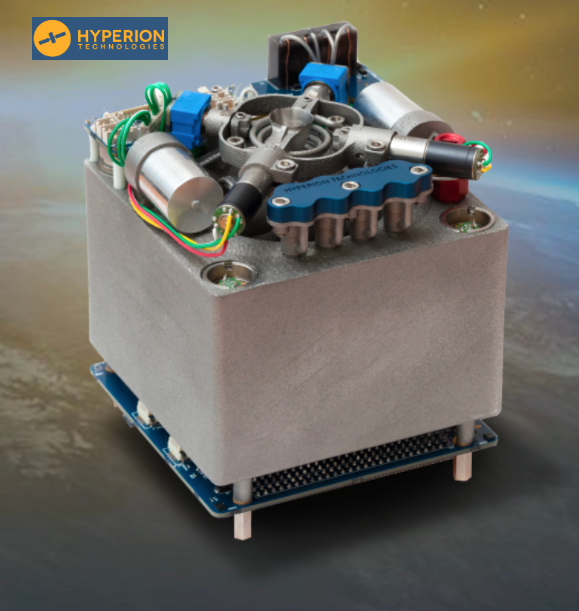
The Hyperion PM200 delivers high thrust
propulsion capability to 3-12 cubesats and
similar platforms/
Against the backdrop of the global pandemic, we have completed three strategic acquisitions, two capital raises and have built a large and promising sales pipeline to drive growth in 2021 and beyond. These results are a testament to the tenacity and fortitude of our highly skilled teams and partners.
The acquisition of Hyperion Technologies extends our product offering and access to key technologies, including propulsion and laser communications, adding substantial capability to our missions and helping us to overcome two major challenges faced by the industry: congestion and radio frequency bandwidth limits.
The SpaceQuest acquisition gives us a strong foothold in the US, the world’s largest and most dynamic space market, providing a US manufacturing presence and immediate, strong, client relationships for our SDaaS business, which is the central pillar of our growth strategy.
Through the Omnisys acquisition, we gained 28 years of experience in developing profitable, high-performance electronics hardware that includes world-class sensors. This is key to developing our SDaaS offering as it enables us to build constellations that can provide higher quality, more timely data to an increasingly data-hungry market. In particular, we gain a leading position in space- based weather data, a field set to grow strongly as new technology enables huge improvements in forecasting.
What do you believe are the reasons why the “New Space” market segments have been increasing in interest and the constant influx of fresh developments of late?

25 Years of flight mission heritage.
Luis Gomes
From precision farming to climate change to driverless cars, people need more data, better data and more timely data to address pressing global challenges and improve our quality of life on Earth. Terrestrial solutions alone cannot meet this need: but satellites can fill the gap. Starting this decade, they will transform entire industries to support people on Earth in almost every aspect of dayto- day life.
Morgan Stanley2 estimates that the revenue generated by the global space industry may increase to more than $1 trillion by 2040 — that’s almost equal to Mexico’s GDP. Why is this happening now? The cost of satellites and long lead-times have restricted access to space mainly to governments and a handful of large multinational companies. Traditional models can cost in the hundreds of millions of dollars, take three or four years to build and can be as big as a school bus.
Now, advances in smallsat technology and new smart payloads and sensors are making a much wider range of commercial applications possible — and economically viable. Smallsats are bringing Moore’s Law to space: in the same way that smartphones put significant computing power in the palm of your hand, smallsats are revolutionizing life on Earth by enabling a range of applications from orbit, often at a fraction of the cost and time of legacy satellite systems.
For example, our smallest satellite, a 1U cubesat, is small enough to hold in the palm of your hand and weighs just over 1 kg.
How does AAC Clyde Space define a cubesat?

Omnisys has delivered space flight hardware for a number
of Swedish satellite projects, such as ODIN.
Luis Gomes
A cubesat is a miniaturized satellite comprised of standard units (U). Each unit is 10 x 10 x 10 cm. These units can be stacked, like building blocks, to build cubesats of different sizes.
Cubesats are enabling a growing range of businesses to access space services and increasingly replacing larger satellites in scientific and commercial missions. They are standardized, which means they can be mass-produced using off-the-shelf components and launched more easily than their customized counterparts, all helping to lower costs.
At the same time, competition among launch providers is driving down the cost of delivering spacecraft to orbit. By changing the economics of space, cubesats and other smallsats are enabling operators to engage large constellations. This is where many smallsats work together as a system to accomplish a mission. In large enough numbers, they have the potential to deliver continuous, real-time global coverage, creating opportunities for optimization and prediction across a vast range of applications, such as: fighting wildfires, cargo monitoring (for example, vaccines, which must be kept at precise temperatures in transit) and tackling illegal fishing, to name just a few.
Emerging data needs can also be satisfied at a totally new pace. Thanks to their short lead-times, smallsats can be launched on demand, for example, to collect information in response to a catastrophe or to monitor a conflict zone.
We expect to see exponential growth in smallsat launches over the next decade, driven by the deployment of mega-constellations (networks of a hundred satellites or more) dedicated to ‘internet-in-the-sky’ proposals, such as Amazon’s Project Kuiper and SpaceX’s Starlink — but also smaller constellations dedicated to delivering better, more timely data to a growing range of businesses across a range of applications, from asset tracking to earth observation.
Mr. Gomes, what are the key market sectors that will be the focus for AAC Clyde Space?
Luis Gomes
Weather is a strong area of focus for us. The world needs more accurate weather forecasting. Extreme weather events — from excessive rainfall to coastal flooding and wildfires — were responsible for much devastation across our planet in 2020.

All too often, the response is reactionary because businesses and governments lack the information needed to prepare. The result is unnecessary lives lost, business disruption and major insurance costs. The United Nations estimates the direct economic losses from weather disasters between 1998 and 2017 at almost $3 trillion.
Space-based weather data is set to rapidly increase as new technologies dramatically improve forecasts. In addition to our work with Orbital Micro Systems to deliver satellites for their Global Environmental Monitoring System (GEMS), we gain a leading position in this field through the Omnisys acquisition. Omnisys has a proven track record developing sensors for weather data in order to create reliable weather forecasting and data for climate research.
For example, Omnisys has recently developed a new type of microwave-based sensor that provides weather data with superior quality, which has gained strong interest from both public and private customers. In March of this year, Omnisys was awarded a contract to supply microwave sounding sensors to the European Space Agency (ESA) project Arctic Weather Satellite.
If successful, the project would enable, for the first time, very short-range weather forecasting, or ‘nowcasting’, in the Arctic and lay the groundwork for a potential constellation of 16 satellites. Meteorologists will also use the mission to improve weather forecasts around the world.
How are you using smallsat technology to improve life on Earth?
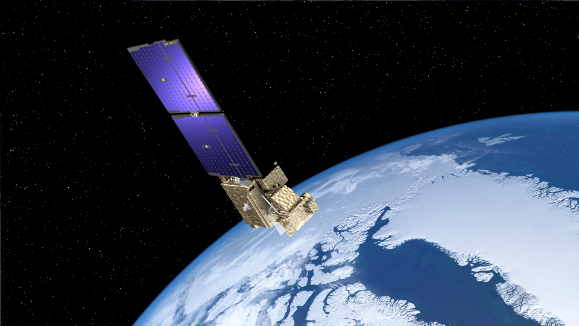
Artistic rendition of the Arctic Weather Satellite,
courtesy of ESA and OHB Sweden.
Luis Gomes
Over the past year, AAC Clyde Space has embarked on several exciting projects that will enable businesses and governments to understand the environment better, manage our planet’s resources more efficiently, and help us all to live more safely and sustainably. In example, we are excited to be part of a team that is delivering the next generation of maritime communications to seafarers worldwide, improving safety and efficiency on the oceans.
Together with Saab and ORBCOMM, we are developing the first satellite of a future constellation that will provide a space-based VDES (Very High Frequency Data Exchange System) for two-way communication between satellite and ground. The added space capability will increase VDES’ range from the shoreline to anywhere in the ocean, converting what is currently a predominantly coastal system into a global maritime system.

Artistic rendition of Space Forge’s ForgeStar-1 manufacturing
satellite on-orbit. Image is courtesy of SPACE FORGE.
VDES can be integrated with e-navigation systems, enabling savings in fuel and emissions of up to 25 percent. It also provides more bandwidth than the widely used Automatic Identification System (AIS) for better coordination between ships, which means fewer accidents.
Where accidents do occur, VDES will enable quicker response times, allowing for faster clean-up of any diesel or oil spills. VDES is also a game-changer in the detection of illegal fishing, piracy, smuggling, and transshipments (all ships are fitted with AIS, but this can be manually turned off to avoid detection).
The satellite we are developing, a 3U cubesat, is the first of a planned future constellation and will be the first satellite assembled at AAC Clyde Space’s new integration facility in Uppsala, Sweden. Scheduled for launch in 2022, it will carry a VDES payload from Saab and the data it captures will be integrated by ORBCOMM in its distribution center. Once it has demonstrated its capabilities, the plan is to launch a larger constellation that will revolutionize global maritime communications.
With smallsats numbering in the thousands orbiting the Earth, how do you think the space industry will deal with the issue of space debris now and in the immediate future?

AAC Clyde Space subsystems.
Luis Gomes
Given the expected growth in satellite launches over the next decade, the regulation probably needs to be revisited and updated through consultation with the industry. We are particularly focused on reducing the generation of space debris as the New Space economy expands. This means complying with regulations, but also proactively working on propulsive solutions for collision avoidance and to accelerate re-entry.
We are also working with clients to innovate on this issue. For example, we are supporting British Space Forge in designing a satellite platform that will leverage the space environment for production in-orbit. The satellite is intended to stay in-orbit for six months and then descend to Earth for the product to be delivered to customers. They will develop a satellite design based on our standard products, adjusting for re-entry into the atmosphere and landing on Earth.
Normally, smallsats burn as they enter the atmosphere, but Space Forge are developing technologies to enable the return of satellites from space to Earth for recovery, refurbishment and eventual re-launch.
Please explain what SDaaS is and why this technology’s development is so important to the company?
Luis Gomes
SDaaS changes the game as the technology allows us to serve multiple customers with the same constellation. For these reasons, it will be the top growth engine for AAC over the coming years and we are positioning ourselves to be a world leader in this market.
What do you believe gives AAC Clyde Space an edge in this sector?
Luis Gomes
In the last year we have enhanced and accelerated our ability to deliver space-based data and services to our clients to meet fast-growing demand. First, through our acquisition of SpaceQuest, which already operates its own constellation and ground station network and provides immediate clients and profitable revenues in this area.
We have also secured the xSPANCION contract with ESA to design and develop an innovative constellation of 10 satellites. Critically, through this work we will develop a blueprint for developing future constellations that will anchor the development of SDaaS to our clients.
As demand for data continues to explode, the industry is already working to deliver the next generation of constellation services: from scaled, responsive manufacturing to satellite multitasking, on-orbit data processing and storage, inter-satellite communications and end-user interfaces. New sensors are providing data that wasn’t even available before.
Again, we have enhanced our capabilities here through our recent acquisition of Omnisys, which has 20 years of experience developing profitable high-performance electronics hardware, including world-class sensors. For example, Omnisys microwave sounders give us a leading position in space-based weather data.
Our acquisition of Hyperion gives us access to key technologies, including propulsion and laser communications, that add substantial capabilities to our missions and will help us to overcome two major challenges faced by the industry: increasing congestion in Low Earth Orbit (LEO) and radio frequency bandwidth limits.
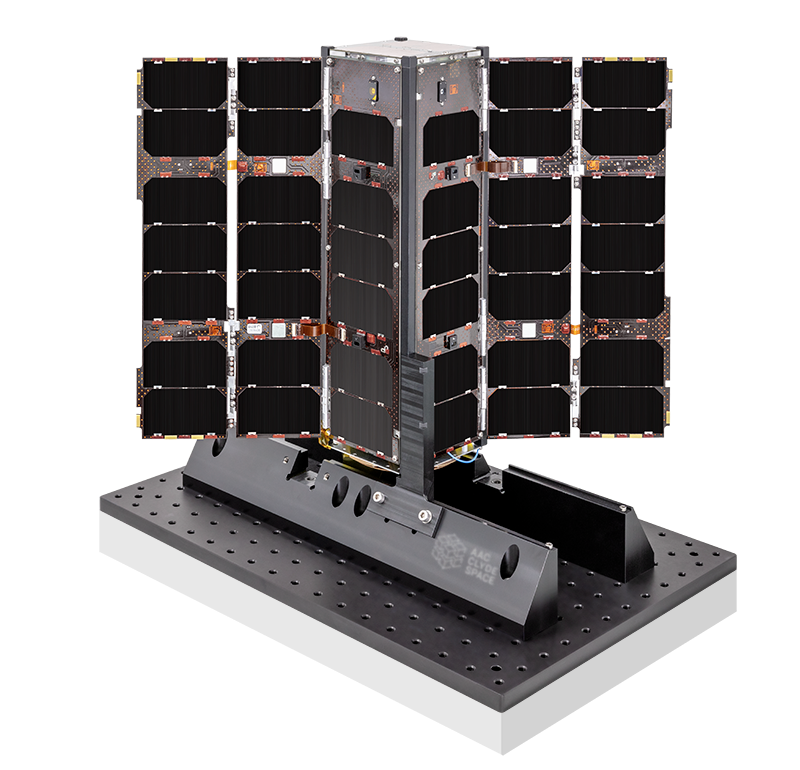
It’s also important to note that we have 15 years of operational experience in this industry, grounded in engineering expertise that starts at the subsystem level and extends through to integration, production, testing, in-orbit operations and data delivery. This vertical integration gives us control over our supply chain and means that we can be quicker to innovate and respond to client needs — a powerful edge in a fast-evolving market.
Will the company be as engaged with the military/ agency/government market segments as the firm is within the commercial environs? If so, please discuss these opportunities as you see them.
Luis Gomes
We are a company that has a strong focus on commercial business,and we thrive in that environment. However, we also engage extensively with civilian agencies and governments in Europe and we want to extend those relations even further. In the US, we see great opportunities to sell to the Government with the type of hardware and services that we offer.
The great opportunity for supplying the public sector is through SDaaS. This can offer a real alternative to the traditional slow and expensive practice of procuring space assets every time an agency needs some data. SDaaS offers a scalable and cost effective way of growing available data types and quantities, leveraging the investments done by industry. We already saw some tentative steps in this direction in the US and we expect to start to see similar moves in Europe.
Regarding military space, we have traditionally supplied partners that supply the DoD or MoDs, rather than selling directly, but I see this changing. The technology and services that we are now flying is proving increasingly interesting to several military forces, particularly as some civilian systems can offer valuable ancillary data or services for surveillance and monitoring. In this context, I could see AAC Clyde Space playing a bigger role in this area.
How does the UK space industry look to you as a national mission committed to the development of space through the production and launch of smallsats to orbit?
Luis Gomes
We are extremely supportive of, and committed to, the UK space strategy. The UK was one of the great innovators (if not THE great innovator) in small satellite technology. The development of the industry was hampered in the past by a lack of clear direction from previous governments. I am very encouraged by the current government’s attitude and support for the industry, showing intent to ensure the UK is a world leader in this sector. The investment in OneWeb, the creation of designated space ports in Scotland and Cornwall, as well as the energy going into Sovereign launch, will help achieve that leadership role.
Mr. Gomes, what truly excites you about the future developments you see coming to the smallsat market at AAC Clyde Space?
Luis Gomes
I’m hugely excited about what we’re doing at AAC Clyde Space, fulfilling the promise of many years of smallsat development to improve life on Earth. The increased ability to deliver complex data products and services to our customers will drive much of our commercial success.
When I imagine the future, I see a company delivering a range of services and data, from an on-orbit constellation built around highly flexible, reconfigurable satellites. This constellation will offer communication services to autonomous ships around the world, paired with some of the most accurate weather forecasts the world has ever seen. These forecasts will also help the farmers that will receive the millions of square kilometers of images that the constellation will capture every day, to deliver higher yields from their fields.

These are just some of the developments that we are already working on. There will be others, some that at this stage are just an idea, but that our constellation, the satellites, the ground network and our people will enable. Our satellite technology, used in a tightly interconnected network of satellites, is linked by highly efficient laser terminals from Hyperion and communication with the SpaceQuest ground network.
The possibilities are endless.
www.aac-clyde.space


